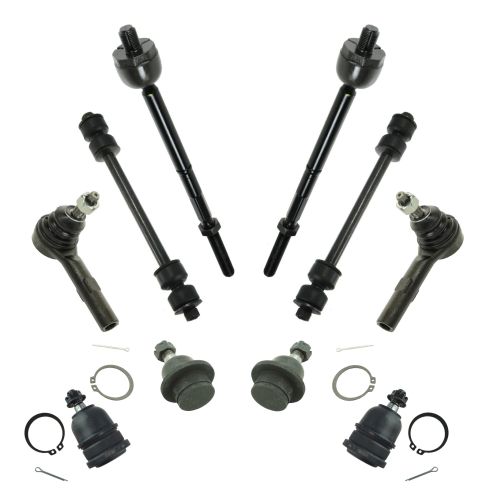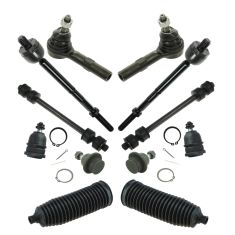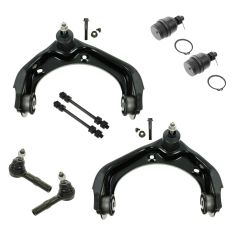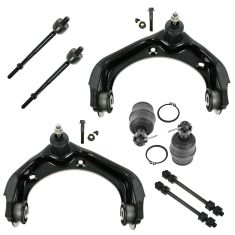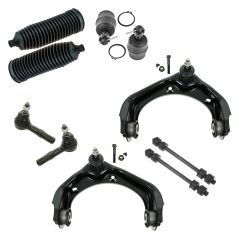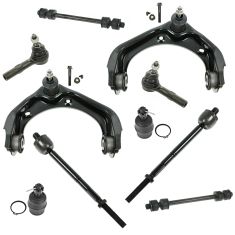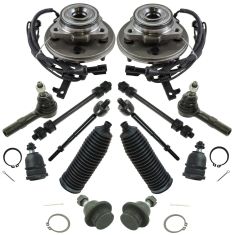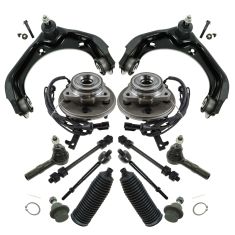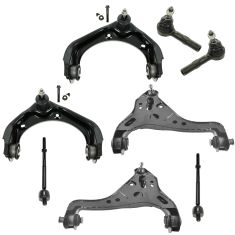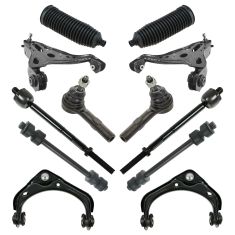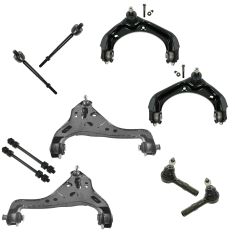Hi, I'm Mike from 1A Auto. We've been selling auto parts for over 30 years. We're dedicated to delivering quality auto parts, expert customer service, fast and free shipping, all backed by our 100% satisfaction guarantee. Visit us at 1AAuto.com, your trusted source for quality auto parts.
In this video, we're going to be working with our 2006 Ford Explorer. We're going to show you how to remove and replace your vehicle's outer tie rod. We're doing this on the passenger side, but the procedure is the same on the driver side. If you like this video, please click Subscribe. We have a ton more information on this and many other vehicles. If you need this part for your truck, you can follow the link down in the description over to 1AAuto.com. Here are the items you'll need for this repair. Here are the items you'll need for this repair.
Using a 19mm socket and a breaker bar, loosen the lug nuts on your tire. Raise and support your vehicle. We're doing this on a lift to make it easier to show you what's going on, but this job can be done at home on a jack and jack stands. Finish removing your lug nuts. You should be able to do this by hand at this point but you can use a ratchet if you need to. You can then remove your wheel and tire.
It may be a good idea to apply some penetrating oil to whatever parts you're going to be working with. Remove the 21mm jam nut with a 21mm wrench. You really only need to crack that loose.
Remove the 19mm nut from the bottom of the tie rod end at the knuckle. We'll do this with the 19mm socket and ratchet. In order to save our tie rod end and not damage it in the removal process, we're going to use a hammer and hit the side of the knuckle right here to oblong the hole for a second and pop the actual tie rod end out. Be sure to wear proper safety equipment when doing this. Remove the tie rod end. Count the number of revolutions it takes to remove it, so we can install our new one the same way. That looks like 20 for us.
Using a pair of locking jaw pliers, clamp on to the inner tie rod and just brace it against the lower control arm. Mark one side of the nut, so you can count the number of rotations to remove that as well: 28-1/2.
Here we have our old part that we removed from our vehicle and our new part from 1AAuto.com. As you can see there are some minor differences in the size of the piece, but the threads on the inside are the same and we have the same stud and tapered end on the opposite side. If your old outer tie rod has play on the end, this ball socket can get a little bit of slop in it and create some steering and alignment issues. This new part from 1A Auto will go in direct fit just like your original equipment and fix you up right.
I'm just going to put some anti-seize lubricant on the inside of this to make sure that it's always easy to adjust, and we'll do the same thing to the jam nut. Now, our new outer tie rod is just a little bit shorter on the actual female thread piece than our original one was, so I'm just going to spin the jam nut on, and then we'll apply some more anti-seize to the threads. Now, although the actual length on the female threads here is smaller, we're going to go ahead and install it 20 turns just like we did with the part that came off: 1, 2, 3, and your numbers may be different than this. You do just want to go the same amount of rotations. All right. Put back the jam nut until it just touches the end of our outer tie rod.
Then, we reinstall it into the knuckle. Install the new nut included with your new outer tie rod. We'll tighten that down with a 22mm socket and ratchet. Torque the nut to 52 foot-pounds.
Now, when we were knocking the outer tie rod end out of the knuckle, kind of folded the backing plate here. While it's not quite touching our rotor, it's a pretty common issue. You can just take a little pair of pliers and just tweak it until it's just about the same shape as it was. You can see there's some wrinkles and stuff that have happened over the years on it anyway, but just taking that extra second to pull it away is going to keep you from getting annoying noises that can cause you frustration after you've already made your repair.
Reinstall the wheel and tire onto your hub. It's easiest to put a lug nut inside of the 19mm socket to start it onto the studs. Get all five of these down as tight as you can by hand, and then we'll torque the wheel once there's some weight on it. Lower the vehicle back down and put partial weight onto the wheel and tire. This means that you may have your jack or lift under the vehicle. Get the tire to touch and let the vehicle come down some without allowing it completely off of the lift or jack. Torque your lug nuts to 100 foot-pounds in a cross pattern.
Thanks for watching. Visit us at 1AAuto.com for quality auto parts, fast and free shipping, and the best customer service in the industry.
